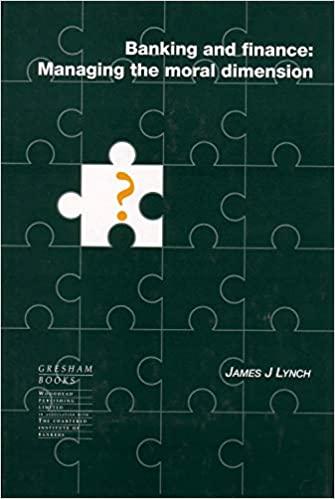Question
Five phases: (1) patient evaluation, (2) patient care while awaiting surgery, (3) organ procurement, (4) surgery and the attendant inpatient stay, and (5) one year
Five phases: (1) patient evaluation, (2) patient care while awaiting surgery, (3) organ procurement, (4) surgery and the attendant inpatient stay, and (5) one year of follow-up visits. The costs involved in Phase 1 are relatively simple to estimate, but the remaining phases can be extremely variable in terms of resource utilization, and hence costs, because of differences in patient acuity and surgical outcomes.
Historically, reimbursement for transplant services has been handled in a number of different ways. Initially, many providers bundled all five phases together and offered insurers a single, global rate. Although this method simplified the contracting process, the rate set was often chosen more on the basis of building market share than on covering costs. Indeed, many providers could not even estimate with any confidence the true costs of providing transplant services.
Somewhat ironically, success in gaining market share usually increases the financial risk of the transplant program because higher volumes increase the likelihood of higher acuity patients. Although the total costs associated with all phases of a liver transplant average about $400,000, the amount can more than quadruple if the patient requires a re-transplant or if other complications occur. Because of this extreme variability in costs, outlier protection is a critical aspect of contract negotiations if the reimbursement methodology is a fixed prospective rate.
So far, several elements of the proposed contract with TMC have been finalized. Phases 1, 2, and 5 will be reimbursed at a set discount from charges. Furthermore, to reduce the amount of financial risk borne by University Hospital, Phase 3 (organ procurement) will be reimbursed on a cost basis. This makes sense because the cost of Phase 3 is almost completely uncontrollable by the Center. In general, Phase 4 costs are divided into two categories: hospital costs and physician costs. Physician costs have already been agreed on, so what needs to be hammered out (and the make-or-break part of the contract) is the hospital reimbursement amount for Phase 4.
The key to a sound negotiation with TMC is to identify relevant costs. Mark plans to be aggressive in pricing these services, because he wants the contract. He feels that the additional volume will lower per-transplant cost and hence increase the Centers profitability. Still, he wants to set a price that does not degrade the current profitability of the Center, which is good but not spectacular.
To help with the decision, Mark compiled the Phase 4 hospital costs of 12 recent liver transplant patients. In reviewing these data, shown in Table 1, Mark noted that a total average cost of $119,805 for 19 days average length of stay (LOS) translates to a staggering per diem (per day) average cost of over $6,000.
Mark is convinced that a price close to $120,000, which would cover total costs, would not be acceptable to TMC. So, he examined the possibility of lowering costs by reducing the average LOS. However, the costs associated with Phase 4 are not a linear function of LOS. The first day of Phase 4 is usually the most costly, whereas the last day is usually the least costly. Indeed, over half of Phase 4 costs occur in the first 24 hours of hospitalization.
Because it would be difficult to lower Phase 4 hospital costs by reducing LOS, Mark decided to pursue a different strategy. His experience at the Transplant Center has convinced him that there are economies of scale present in liver transplants, and hence the marginal cost of each transplant is lower than the average cost. Thus, Mark believes that he can base the contract price on marginal costs rather than total (full) costs. Such a rate would (hopefully) be attractive to TMC yet, at the same time, preserve the Centers profitability.
Assume that you have been hired as a consultant to recommend a fixed price (the base rate) that should be proposed in the contract negotiations for Phase 4 hospital services. To help in the analysis, Mark has indicated that approximately 60 percent of nursing, ancillary, operating room, and laboratory costs are fixed. The remaining costsradiology, drug, and other servicesare predominantly variable. See Excel spreadsheet for Phase 4 Hospital Costs.
Questions
Assume that the agreed-upon price is $90,000. What is the expected profit on the contract assuming that it brings in 20 new patients? (Assume for now that no new fixed costs would be required.)
Step by Step Solution
There are 3 Steps involved in it
Step: 1

Get Instant Access to Expert-Tailored Solutions
See step-by-step solutions with expert insights and AI powered tools for academic success
Step: 2

Step: 3

Ace Your Homework with AI
Get the answers you need in no time with our AI-driven, step-by-step assistance
Get Started


